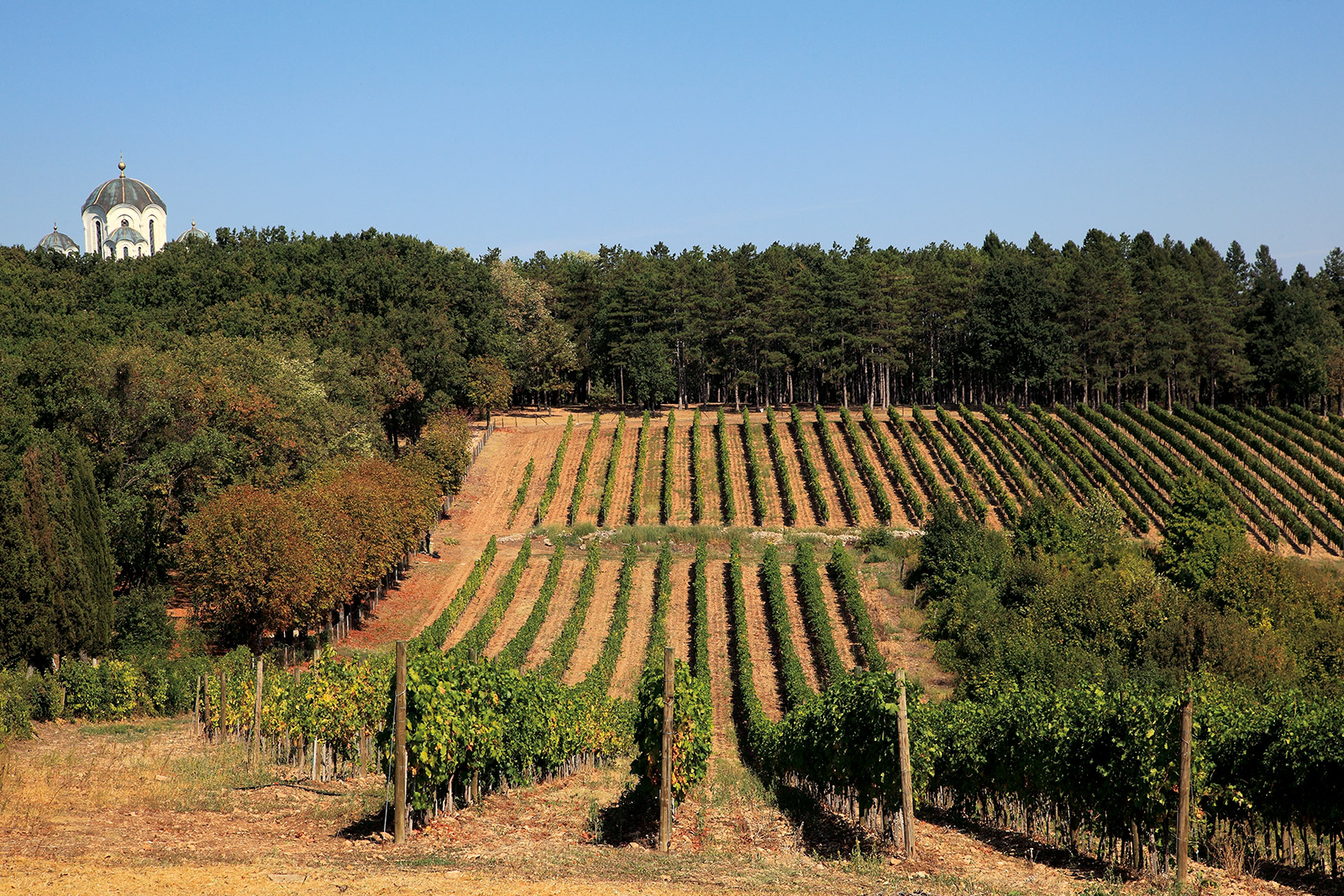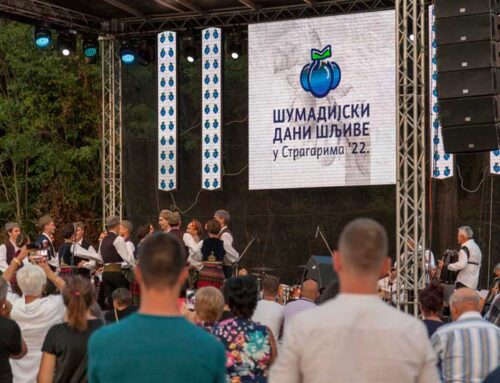Publikacija Putevi vina Srbije
Publikacija je idaelno štivo za sve one domaće i inostrane posetioce koji žele da krenu u vinsku avanturu po Srbiji, žele da probaju srpska vina u podrumima u kojima nastaju, degustraju ih u društvu i pod stručnim vođstvom onih koji ih prave i, pri tom, čuju zanimljive priče o vinu, vinskoj tradiciji svakog kraja i podruma, kao i da „slože“ ukuse vina sa raznovrsnom domaćom kuhinjom.
Turistička organizacija Srbije je objavila publikaciju Svet vina u kojoj su na četrdeset strana predstavljeni sadržaji vinskog turizma u Srbiji. Ona je rađena na osnovu nove regionalizacije po kojoj je Srbija podeljena u tri regiona: Vojvodinu, centralnu Srbiju i Kosovo, u sklopu kojih su dvadeset i dva rejona, odnosno sedamdeset sedam vinogorja i više vinogradarskih oaza. Sva ova područja, sa svim svojim istorijskim, geografskim i klimatskim raznolikostima, nude isto toliko različitih, osobenih, atraktivnih i za sva čula ugodnih vinskih i turističkih sadržaja.
Renesansa srpskog vinarstva
Uz tvrdnju da je Srbija definitivno postaje vinska destinacija, u publikaciji se navodi da je poslednjih petnaest godina naša zemlja doživela pravu renesansu vinogradarstva i vinarstva. Obnovljeni su mnogobrojni stari i zasađeni novi vinogradi, osnovano je više od tri stotine vinarija koje proizvode preko hiljadu različitih vina. I – što je najvažnije – na tržištu su se pojavila nova domaća kvalitetna vina i vina vrhunskog kvalieta sa kontrolisanim geografskim poreklom. Koliko su vinogradarstvo i vinarstvo rasprostranjeni i koliko su značajna privredna grana, najbolje ilustruju podaci da se proizvodnjom grožđa u Srbiji bavi više od 80. hiljada gazdinstava i da je pod vinogradima više od 25.000 hektara
Nosioci proizvodnje kvalitetnih i vrhunskih vina sa zaštićenim geografskim poreklom su male i srednje vinarije, čiji se broj poslednjih godina ubrzano povećava. Mnoge vinarije pored vinograda i savremenih podruma imaju prostorije za degustaciju i prodaju vina, sve više je restorana u okviru vinskih podruma, poslednjih godina i smeštajnih kapaciteta. Podrumi i vinogradi su otvoreni za organizovane posete, a goste, osim svojim najbljim vinima, vinari dočekuju lokalnim i nacionalnim kulinarskim specijalitetima. Istovremeno, gosti mogu da posete mnogobrojne lokalne kulturne i istorijske znamenitosti i da uživaju u izvanrednim prirodnim lepotama kojima obiluju svi krajevi Srbije.
Vinske staze središnje Srbije
Autori su posebno vodili računa o ravnomernoj zastupljenosti svih vinskih rejona ističući osobenosti svakog od njih. Najviše prostora zauzima Centralna Srbija – najveći i najznačajniji vinski region u Republici, u čijem je sastavu 13 vinskioh rejona, među kojima je najveći vinogradarski rejon Tri Morave, u kom je gotovo trećina svih vinograda u zemlji. Pažnja čitalaca je posebno usmerena na autohtone sorte prokupac i tamnjanika. Posebno mesto pripada Šumadiji, koja je početkom prošlog veka postala važan centar srpskog vinogradarstva i vinarstva zahvaljujući dinastiji Karađorđevića. Zahvajujući podrumima Radovanovć i Aleksandrović – prvim privatnim vinarijama u Srbiji, koje su krajem minulog veka počele da proizvode kvalitetna i vrhunska vina sa svojom etiketom, u Šumadiji je počeo svojevrsni preporod vinarstva u Srbiji.
U publikaciji se podseća da je Beograd pored Beča, jedina evropska prestonica koja u svom ataru ima vinograde, vinske podrume i svoja vina. U Beogrdskom rejonu je i Smederevo, jedan od najstarijih i najvažnijih vinogradarskih krajeva u Srbiji, od Rimljana, kasnije Despota Stefan Lazarevića i Đurađa Brankovića, u 15. veku, pa do dinastije Obrenović krajem 19. veka.
Vina Vojvodine i Kosova
Dat je i veoma deteljan opis vinske i turističke ponude regiona Vojvodine, sa jednim od od najlepših vinogradarskih krajeva Srbije – Sremskim rejonom. Centar vinarstva u ovom rejonu sa najviše registrovanih vinarija u Srbiji – preko stotinu, su Sremski Karlovci, u kojima su mnogi vinogradari tokom 18. i 19. veka podizali vinske podrume – lagume, kojih je bilo oko 500. U dvadesetak se i danas proizvodi vino, pre svega karlovački brendovi – bermet i ausbruh, čija se tehnologija pravljenja čuvala i prenosila kao tajna sa kolena na koleno u porodicama koje su ga proizvodile. Značajan prostor u publikaciji je posvećen Južnobanatskom rejonu, sa Vršcem kao centrom, koji je do kraja 19. veka bio najznačajnije vinogorje u Ugarskoj, a vinsko selo Gudurica bilo centar tog vinogorja. Prestavljen je i Subotički rejon, koji je karakterističan po dve autohtone sorte: kadarki, kako ovde nazivaju skadarku i kevedinki ili ružici crvenoj.
Nije zapostavljen ni region Kosovo i Metohija, koji je istorijski veoma važan za srpsko vinarstvo i vinogradarstvo u kome se i danas proizvodi odlično crveno vino.
Vinski turizam na dlanu
Putevi vina su pregledan i sveobuhvatan vodič kroz regione, rejone i vinarije, sa akcentom na vina koja se u njima proizvode, a poseban značaj je dat autohtonim sortama. Publikacije je opremljena veoma kvalitetnim mapama sa adresama stotinu i pedeset vinarija i podruma, spiskom vinskih manifestacija i adresama turističkih organizacija gradova i regiona sa razvijenim vinskim turizmom.















Social Network